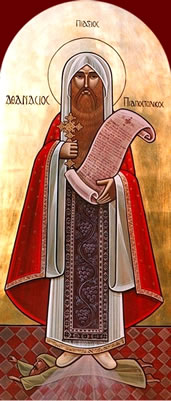Tetrarchy Table by Region
The following table is intended to serve as a graphical aid in the study of the Roman Tetrarchy from 293-324. The columns display the years, while the rows represent the four different prefectures of the Empire. Each emperor’s name is given the year he came to power. The color represents the emperor’s rank. Blue indicates the rank of Caesar, while red indicates Augustus. In 324 Constantine became the ruler of the whole empire by defeating Licinius, and named his own sons as Caesars. The appointment of Crispus and Constantius in 317 does not indicate a loss of power by Constantine, but rather his victory and subsequent privilege of naming the rulers. Prior to 317, each Caesar seems to have had a certain amount of autonomy in his prefecture. Constantine’s sons are a slightly different story, deriving their power from their father, who conquered the eastern half of the empire.
|
293-304 |
305 |
306 |
307 |
308 |
309 |
310 |
311 |
312 |
|
|
Gaul |
Constantius |
|
Constantine |
|
|
|
|
|
|
|
Italy |
Maximian |
Severus |
|
|
Licinius |
|
|
|
Constantine |
|
Illyricum |
Diocletian |
Maximinus |
|
|
|
|
|
|
|
|
East |
Galerius |
|
|
|
|
|
|
|
Maximinus |
|
313 |
314 |
315 |
316 |
317 |
318 |
319 |
320 |
321 |
322 |
323 |
324 |
|
|
Gaul |
|
|
|
|
Crispus |
|
|
|
|
|
|
|
|
Italy |
|
|
|
|
|
|
|
|
|
|
|
|
|
Illyricum |
Licinius |
|
|
|
Constantius |
|
|
|
|
|
|
|
|
East |
Licinius |
|
|
|
|
|
|
|
|
|
|
|
Note: This chart does not include the usurper Maxentius, who ruled (occasionally with the help of his retired father Maximian) in Italy from 306-312.
This table gives each emperor his own color, so that we may more clearly see the distribution and transfer of power throughout the empire. The asterisk is used to indicate the year in which a given emperor was named Augustus. This table shows Constantine’s rise to power especially clearly, noting the ever growing amount of red from left to right. Crispus and Constantius’ cells have been left red, because there is no doubt that Constantine ruled those prefectures, his sons being placed as Caesars for succession purposes. Once again, Maxentius and the return of Maximian have been left out for the sake of simplicity.
|
293-304 |
305 |
306 |
307 |
308 |
309 |
310 |
311 |
312 |
|
|
Gaul |
Constantius |
* |
Constantine |
|
|
|
|
|
|
|
Italy |
Maximian |
Severus |
|
|
Licinius |
|
|
|
Constantine |
|
Illyricum |
Diocletian |
Maximinus |
|
|
|
|
|
|
|
|
East |
Galerius |
* |
|
|
|
|
|
|
Maximinus |
|
313 |
314 |
315 |
316 |
317 |
318 |
319 |
320 |
321 |
322 |
323 |
324 |
|
|
Gaul |
|
|
|
|
Crispus |
|
|
|
|
|
|
|
|
Italy |
|
|
|
|
|
|
|
|
|
|
|
|
|
Illyricum |
Licinius |
|
|
|
Constantius |
|
|
|
|
|
|
|
|
East |
Licinius |
|
|
|
|
|
|
|
|
|
|
|
On to the Detailed Chronology of the Tetrarchy
Created by JRZ. Based on T.D. Barnes, Constantine and Eusebius.
No Responses yet
